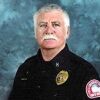Listen to this article on the Fair Reach Forum – a firefighting podcast to inspire discussion.
https://anchor.fm/fair-reach-forum/episodes/The-Challenges-of-a-Railroad-Disaster-ebvdip/a-a1pccqh
On Feb. 21, 1996 just before 6 p.m. local time a Southern Pacific freight train derailed at the Tennessee Pass, a 3 percent grade south of Leadville, Colo. The train had two locomotives and 39 cars; 52,000 gallons of sulfuric acid and 20,000 gallons of triethylene glycol were spilled.
It was a bad day for local firefighters. Since then the problem has only gotten worse.
Increased response for train derailment incidents
Railroad disasters have increased tenfold during the past decade. From the high mountain passes of the Rockies to the plains of the Midwest, to the hills of North Dakota to the industrial valleys of the East and South, we are witnessing an aging infrastructure, self-regulation gone awry, and railcars that are deteriorating at an alarming rate.
Ten percent of all cargo transported by rail is hazardous materials. Add to this the number of coal, oil and gas containers, and you have a formula for widespread catastrophe.
As a firefighter, you will be jumping down from your engine or truck. Any major event such as a career fire, multi-vehicle accident or a natural disaster is initially overwhelming upon arrival. Train derailments and other incidents are no exception. You may encounter twisted metal, hot gasses, products spilled and passengers and crew to be located.
Strategies for handling train derailments, hazmat cargo spills and other incidents
The good news is that such event strategies are straightforward due to the magnitude of the incident. Save lives and protect property. As firefighters, you will accomplish this through rescue, use of water, mitigation of materials and scene stabilization using all the resources and agencies available.
As you and your crew begin preparations for staging, you will find yourself waiting for the next assignment. Things will appear to move slowly. The initial agitated behavior is being dialed down into a command response.
Unified command has local, state and federal representatives of law enforcement, various government organizations and private industry in addition to our emergency response agencies. These are the folks who deal with threats, criminal and negligent behaviors and overall short- and long-term accountability, in addition to the politics and finance stemming from such an event. Planning and operations are shared responsibilities, and this is where our job as firefighters begins.
Your job as a firefighter for such an event begins at the operations level under this unified command. The goals for “boots on the ground” firefighters are tangible, immediate and by definition, narrower in resolution. Your tasks to accomplish tactical objectives that have been practiced, prepared and executed repeatedly.
Our challenge is in structuring assigned tasks into tactical progress such that the overall strategy is brought to a collective conclusion. Sounds simple, but who determines the priority of tactics in dealing with railroad disasters?
Railroad disaster tactical considerationsInitial Size-up
Notifications
Scene Safety (Stabilization)
Rescue
Suppression
Secondary Response
|
Navigating railroad culture during an emergency response
The first challenge is the railway culture itself. Private, autonomous and convoluted by tradition, railroad companies are virtually inaccessible until a responsible party is located.
However unintentional, this results in delays and misinformation when it comes to products transported, their location and amounts, as well as any specific information regarding safety contingencies and unusual circumstances. This type of information can completely control the type of response that will be implemented.
Command may be unified by definition, but jurisdictional challenges, private interests, liability and responsibility issues all play a role in delaying decision-making and as a result, can destabilize any tactical momentum.
Outside the political arena there are the operational challenges of multi-agency response, resource management, communications and logistics. These areas coupled with the sheer size, scope and duration of the work to be done at the scene of a hazmat spill or train derailment, set the table for emergency response agencies to accurately determine the sequencing of tasks at whatever level they are asked to help.
Firefighters will find themselves locating victims and extricating patients — performing primary care on backboards.
And when you’re not too busy putting out fires, suppression activities begin with water supply, exposure lines and various standby actions such as decon and rehab.
Industry improvements bolster firefighter response to TRAIN DERAILMENTS
So that’s the end of the first day, the end of a work cycle when crews are moved in and out of the work zone. Priorities change as tactics develop. Although there is a great deal of work to be done, progress is evident even in these early stages. You can take a break.
The improvements in responding to rail incidents since 1996 are significant — better communications by agencies and better cooperation by everyone. There is a new transparency in government and with private industry, making all relevant information a click away. There are policies and procedures in place such that resources can be shared, like fire departments working in concert with wildland resources.
It is unfortunate that we are improving our response capabilities simply because we are having more railroad incidents. But the truth is we are and we are learning from them and those involved.
All lessons learned emanate from the enormity of an incident that demands that we accommodate multiple responsibilities along with sizeable resources. Knowing this allows us to do our job, take rehab, and go back to work.
This article, originally published Feb. 18, 2014, has been updated













